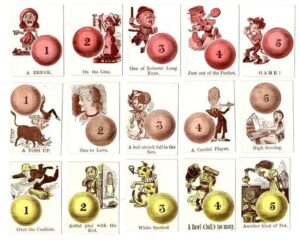
Coin-op game machines have become iconic symbols of arcade culture, inviting players to experience vibrant gameplay and friendly competition. These machines not only capture a sense of nostalgia but also showcase the evolution of technology and gaming design over the decades.
From their humble beginnings to their modern incarnations, coin-op machines have adapted to the changing landscape of gaming, offering immersive experiences that resonate with old and new generations alike. As we delve into their rich history, fascinating mechanics, and cultural significance, we uncover how these machines have left an indelible mark on the gaming world.
Overview of Coin-Op Game Machines

Coin-op game machines have been a pivotal part of the gaming landscape since their inception, serving not only as entertainment but also as cultural icons. These machines have evolved remarkably from their mechanical beginnings to the sophisticated digital systems we see today. Their history is intertwined with broader shifts in technology, economy, and societal trends, making them significant in understanding the gaming industry as a whole.The evolution of coin-op game machines began in the late 19th century with simple mechanical games.
The first known coin-operated machine was created in 1889 by Charles Fey, who developed the first slot machine, known as the Liberty Bell. This innovation paved the way for a myriad of other coin-operated devices. Over the decades, the coin-op industry witnessed technological advancements, transitioning from mechanical reels to video screens and microprocessors. The 1970s and 1980s marked the golden age of arcade gaming, with machines like “Pong” and “Pac-Man” captivating audiences and becoming cultural phenomena.
Today, coin-op machines use advanced technology, incorporating touch screens and internet connectivity, enhancing gameplay and user interaction.
Mechanics and Technology Behind Coin-Op Game Machines
The mechanics of coin-op machines combine both mechanical engineering and digital technology, creating an interactive experience for users. At the core of these machines lies a payment system, which can either be traditional coin mechanisms or modern cashless options, like credit cards or mobile payments. This payment gateway is crucial for operational functionality.The internal workings of a typical coin-op game involve several components:
- Payment Mechanism: The device that accepts coins or digital payments and registers them in the system.
- Main Processor: The brain of the machine, which controls gameplay, graphics, and user interactions. Modern machines often use high-performance processors to run complex games.
- Display Screen: This can range from classic CRTs to high-definition LCD screens, displaying graphics and animations that engage players.
- Input Controls: Buttons, joysticks, or touch screens that allow players to interact with the game.
- Sound System: Enhancements like speakers and sound chips that deliver audio effects and background music, enriching the gaming experience.
Cultural Impact and Significance of Coin-Op Games
Coin-op games have had a profound impact on gaming culture, shaping social interactions and influencing the development of video games. They emerged as communal spaces where people gathered, fostering a sense of community around competitive play. This shared experience not only connected players but also contributed to the gaming culture’s growth.Key cultural contributions of coin-op games include:
- Social Interaction: Arcades served as social hubs, where friends gathered to compete and socialize, significantly enhancing the gaming experience.
- Innovation in Game Design: The need to attract players led to creative game designs that emphasized engaging gameplay and unique mechanics, many of which are foundational to video games today.
- Nostalgia and Influence on Future Generations: Many current game developers grew up in arcades, and their experiences have profoundly influenced modern game design, leading to a resurgence in retro-themed games.
“The arcade has always been a reflection of societal trends, combining entertainment with communal experiences in ways that resonate across generations.”
Types of Coin-Op Games

Coin-operated game machines have evolved significantly over the years, catering to a diverse audience with various preferences. These games not only provide entertainment but also serve as a social hub, making them a popular attraction in arcades, bars, and amusement parks. Understanding the different types of coin-op games is essential for enthusiasts and operators alike, as it highlights the engaging experiences available to players.Among the various categories of coin-op games, the most notable include arcade games and pinball machines.
Each type has its own unique characteristics, gameplay mechanics, and appeal that attract players of different ages and interests. This section will delve into these categories, providing insights into their features and differences, while also considering the nostalgic charm of vintage machines versus the sleek designs of modern counterparts.
Categories of Coin-Op Games
Coin-op games can be broadly classified into several categories, each offering distinct gameplay experiences. Below are some primary categories along with a brief description of each:
- Arcade Games: These are the most recognizable type of coin-op machines, encompassing a variety of genres such as shooting, fighting, racing, and puzzle games. Classic examples include “Pac-Man,” “Street Fighter,” and “Galaga.” Their engaging gameplay and competitive nature make them favorites among players.
- Pinball Machines: Pinball machines combine elements of skill and chance, where players use flippers to keep a metal ball in play and score points by hitting targets. Iconic titles like “The Addams Family” and “Metallica” showcase the artistry and mechanical engineering behind these machines.
- Redemption Games: These games reward players with tickets or tokens based on their performance, which can be exchanged for prizes. Popular examples include “Skee-Ball” and “Whack-a-Mole,” appealing to families and children eager for tangible rewards.
- Claw Machines: These machines challenge players to use a claw mechanism to grab toys or prizes. The allure of winning a stuffed animal makes them a staple in many entertainment venues.
- Virtual Reality Games: The integration of VR technology has brought a fresh perspective to coin-op gaming, offering immersive experiences that transport players into different worlds. Games like “Beat Saber” are gaining traction in arcades.
Comparison of Popular Coin-Op Games
Understanding the features and differences among popular coin-op games helps in appreciating their unique appeal. The following comparison table summarizes key attributes of selected arcade and pinball games:
| Game Type | Example Title | Gameplay Style | Player Interaction | Aesthetic Appeal |
|---|---|---|---|---|
| Arcade Game | Pac-Man | Maze Chase | Single Player | Colorful, Retro |
| Pinball Machine | The Addams Family | Flipper Action | Single Player, High Score | Intricate, Thematic |
| Redemption Game | Skee-Ball | Skill-based | Multi-Player | Classic, Fun |
| Claw Machine | Claw Machine | Chance | Multi-Player | Colorful, Eye-Catching |
| Virtual Reality Game | Beat Saber | Rhythm-based | Single Player | High-Tech, Immersive |
Design and Appeal of Vintage versus Modern Coin-Op Machines
The design of coin-op machines has drastically changed from vintage to modern styles, impacting their appeal to players. Vintage machines offer a nostalgic charm that resonates with older generations and collectors. These machines typically feature vibrant artwork, mechanical components, and simpler gameplay. Their tactile feedback and straightforward mechanics create an authentic arcade experience.In contrast, modern coin-op machines incorporate advanced technology, including high-definition graphics, digital sound effects, and interactive gameplay elements.
The sleek designs and immersive experiences of these machines attract a younger audience, making them feel more relevant in today’s entertainment ecosystem. This evolution in design highlights the balance between maintaining the charm of the past while embracing the innovations of the future, ensuring that coin-op games remain a beloved part of gaming culture.
“Whether vintage or modern, the thrill of coin-op games lies in their ability to create memorable experiences, bringing people together in the pursuit of fun.”
The Future of Coin-Op Gaming
As the world of entertainment evolves, so does the landscape of coin-op gaming. The transition from traditional arcade machines to modern gaming setups is influenced by advancements in technology and changing consumer behavior. This section explores emerging trends in coin-op gaming technology, the integration of online features, and how arcade games are adapting to meet the expectations of a new generation of players.
Emerging Trends in Coin-Op Gaming Technology
The future of coin-op gaming is being shaped by several key technological advancements that enhance the gaming experience. Innovations in graphics, virtual reality (VR), and augmented reality (AR) are transforming how players interact with arcade machines.
- High-Definition Displays: Modern machines are equipped with vibrant, high-resolution screens that provide immersive visuals, making gameplay more engaging.
- VR and AR Experiences: Coin-op games are beginning to incorporate VR and AR to create interactive environments. Players can step into virtual worlds, elevating the arcade experience beyond traditional gameplay.
- Touchscreen Interfaces: The shift to touchscreen technology allows for intuitive gameplay, with many machines now offering multiple game modes and features at the tap of a finger.
Integration of Online Gaming Features
The fusion of online gaming elements with traditional coin-op machines is becoming increasingly prevalent. This integration allows for more dynamic gameplay and deeper player engagement.
- Online Leaderboards: Many contemporary machines feature online connectivity, enabling players to compete on global leaderboards and track their performance over time.
- Remote Game Updates: Coin-op machines can receive updates remotely, allowing operators to introduce new games and features without needing to physically alter the machines.
- Social Features: Some games now incorporate social platforms, allowing players to share scores and achievements, thereby enhancing the communal aspect of arcade gaming.
Adapting to Changing Consumer Preferences
As consumer preferences evolve, so do the strategies of arcade operators to retain relevance in a competitive entertainment market. The following adaptations are notable:
- Mobile Integration: With the rise of mobile gaming, many coin-op games are now being designed to complement mobile experiences, allowing players to continue their gaming on their devices.
- Themed Experiences: Operators are increasingly creating themed environments that include immersive experiences and unique game setups, catering to diverse interests and demographics.
- Subscription Models: Some arcades are experimenting with subscription models, offering unlimited play for a monthly fee, making it more appealing to frequent players.
Last Word
In conclusion, coin-op game machines represent more than just a form of entertainment; they embody a unique blend of history, innovation, and community. As we look ahead, the future of these machines promises exciting developments, ensuring that they will continue to captivate and engage players for years to come.
Questions and Answers
What are coin-op game machines?
Coin-op game machines are gaming devices that require players to insert coins or tokens to play, commonly found in arcades and entertainment venues.
How did coin-op games evolve over time?
Coin-op games started as simple mechanical devices and evolved into sophisticated electronic machines with complex graphics and interactive gameplay.
What types of coin-op games exist?
There are various types of coin-op games, including classic arcade games, pinball machines, and newer digital gaming experiences that integrate online features.
Are vintage coin-op machines still popular?
Yes, vintage coin-op machines are highly sought after by collectors and enthusiasts who appreciate their nostalgic charm and unique design.
What is the future of coin-op gaming?
The future of coin-op gaming includes trends like online integration, new gameplay mechanics, and adaptation to modern consumer preferences for immersive experiences.





